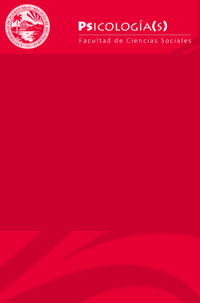Abstract
The historical context underlying geography shows how its teaching was limited, for several centuries, to the description and memorization of places on the earth's surface. The reductionist gaze prevented strengthening spatial reasoning skills in matters related to the environment, regional analysis, and technological applications. The purpose of this article is to incorporate the fundamentals of spatial reasoning to discuss a pedestrian route from the University of Puerto Rico, Río Piedras Campus to Old San Juan. An autoethnography was carried out to respond to the purpose of this article. The investigation of Gersmehl and Gersmehl (2007) were used as main reference for the pedestrian route made. The significant results support that spatial reasoning is cemented in the brain from an early age through the skills of building auras and analogies, comparing, ranking, regionalizing, transitioning, associating, and identifying spatial patterns.
References
Fuller Marvel, L. (2008). Listen To What They Say: An Approach to Social Planning in Puerto Rico. Editorial de la Universidad de Puerto Rico.
García Ramis, M. (1993). La ciudad que me habita. Ediciones Huracán.
Gersmehl, P. (2014). Teaching Geography (3rd. ed.). The Guilford Press.
Gersmehl, P. J., & Gersmehl, C. A. (2007). Spatial Thinking by Young Children: Neurologic Evidence for Early Development and “educability”. Journal of Geography, 106(5), 181-191.
Golledge, R., Marsh, M., & Battersby, S. (2008). A conceptual framework for facilitating geospatial thinking. Association of American Geographers. Annals of the Association of American Geographers, 98(2), 285-285.
Guilbe, C. J. (2009). Big boxes, Mega Stores, and Category Killers Overseas: The Emerging Geography of North American Chain Stores (NACS) in Puerto Rico. Southeastern Geographer, 49(4), 326-339.
Guilbe, C. J. (2002). La Geografía de los amores de emergencia: La prostitución en las calles de San Juan de Puerto Rico. Revista de Ciencias Sociales, 11. https://revistas.upr.edu/index/.php/rcs/article/view/6003
Jacobs, J. (1961). The Death and Life of the Great American Cities. Vintage.
Harari, Y. N. (2014). Sapiens: De animales a dioses. Debate.
Lacoste, Y. (1991). La Geografía: un arma para la guerra. Anagrama.
Lobben, A., & Lawrence, M. (2015). Synthesized Model of Geospatial Thinking. Professional Geographer, 67(3), 307-318.
National Council for Geographic Education. (1994). Geography for Life; National Geographic Standards.
Picó, F. (2014). Santurce y las voces de su gente. Ediciones Huracán.
Picó, F. (2019). Ensayos en torno a la Historia y otros temas. Centro de Investigaciones Históricas.
Saénz Ridruejo, F. (1993). Los ingenieros de caminos. Colegio de Ingenieros, Caminos y Canales.
Sepúlveda-Rivera, A., & Carbonell, J. (1987). Cangrejos-Santurce: historia ilustrada de su desarrollo urbano. Centro de Investigaciones CARIMAR.
Sibley, D. (2003). Geography and Psychoanalysis: Tensions and Possibilities. Social & Cultural Geography, 4(3), 391-399.
Wulf, A. (2019). La invención de la naturaleza: El nuevo mundo de Alexander von Humboldt. Debolsillo.

This work is licensed under a Creative Commons Attribution-NonCommercial-NoDerivatives 4.0 International License.
Copyright (c) 2023 Psicologías

